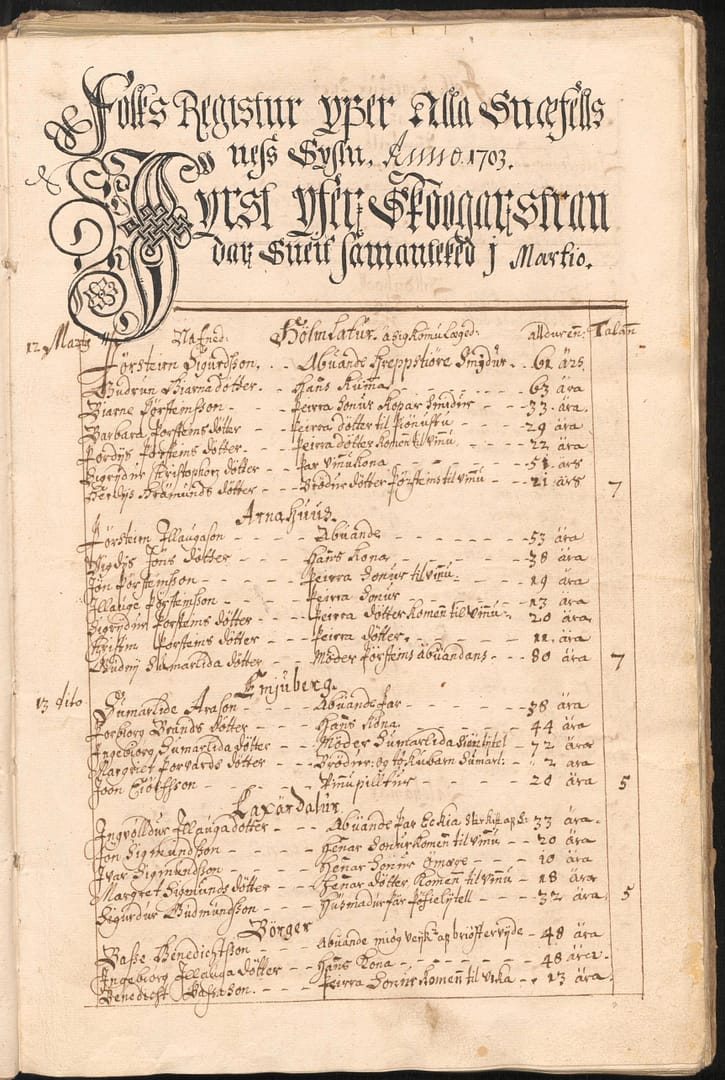The research project makes use of an extraordinarily rich source material emanating from the work of a Royal Commission set up in 1702 to investigate conditions in Iceland in the wake of years of hardship. The Commission, consisting of Professor Árni Magnússon and vice-chancellor Páll Vídalín, collected a vast amount of information on the inhabitants, their demography and social and economic conditions, of which the most important ones were a population census, a livestock census and a national Register of Estates.
The 1703 population census is one of the first censuses in the world to include the entire population of a country with names. As one of the main objectives of the census was to obtain the number of paupers and vagrants, it 
The population census has been preserved in its entirety while only records from 101 of 163 districts have been preserved from the livestock census. The Register of Estates has been preserved for 18 of the 23 counties. Most of the data contained in these three sources will enter into the database.
